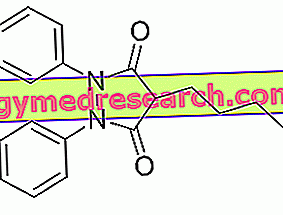Food cooking
Methods, techniques or systems, principles

Food cooking techniques or systems can be differentiated according to different aspects:
- MODALITY (conduction, convection and radiation) and HALF of propagation (air, water, grease, steam, etc.)
- Cooking TEMPERATURE
- TIME or duration of cooking
Secondly, the techniques and systems can also be distinguished by
- INSTRUMENTATION or equipment (pan, oven, casserole, fryer, etc.)
- PURPOSES of cooking food (concentration of food liquids or dispersion of food liquids - for example, boiling to make broth and boiling to make boiled meat).
Cooking can be based on the combination of several consecutive techniques or systems that use different modes of heat transmission; for example, when baking potatoes, it may be necessary to blanch in initial boiling water to facilitate cooking or, for roasts, a pan-scald to facilitate the formation of the superficial crust.
Mode of propagation / transmission of heat
The various cooking techniques or systems for food use three methods of propagation / transmission of heat, which are respectively: conduction, convection and radiation .
- Conduction: conduction is a way of cooking food that is based on the DIRECT passage of heat from a material / surface to food and without the aid of liquids or gases. Pan-fried cooking or grilling are examples of conduction.
It is a mode of cooking food that involves the passage of heat BETWEEN TWO ADHERENT SOLID BODIES.
- Convection: convection is a mode of cooking food that is based on the passage of heat through fluids or gases (water, oil, air) and occurs in the presence of "movement of convection matter" (convective motions of water or oil or steam or air flow) thus favoring thermal transmission.
It is a way of cooking food that involves the passage of heat BETWEEN A FLUID OR A GAS AND A SOLID BODY.
- Radiation: irradiation is a way of cooking food that is based on the passage of electromagnetic radiations that are propagated in space (do not worry! This is the same method by which the sun's rays radiate the planets). To make simple examples, the irradiation takes place in the charcoal cooking by infrared propagation, or in the microwave cooking of special appliances. NB . The microwave cooking mode is more effective on foods that contain many polar molecules and / or water.
It is a mode of cooking food that involves the passage of heat BY MEANS OF RADIATION.
The methods of heat transmission can coexist within the same cooking technique or system; eg in oven cooking (roast type), heat is transmitted simultaneously by conduction, convection and radiation: the conduction is given by the plate (or pan) on which the food rests, convection is obtained with air (or with the steam) contained in it and irradiation by means of direct electric resistances or of the flame fed by the combustible gas. The same happens in the brazier cooking for a braised meat; the metal of the pan (heated by the flame) is the conduction medium, the cooking liquid and the boiling vapors retained by the convection lid.
Cooking techniques or systems and principles
The techniques or cooking systems are about fifteen and are organized in six PRINCIPLES for cooking food.
Principles and related techniques or cooking systems for food:
- DRIED HEAT cooking principles: oven, grill, gratin, roast in the oven, spit-roast.
- Cooking principles in WATER / HUMID HEAT: boiling, blanching, blanching.
- STEAM cooking principles: steam cooking without pressure, steam cooking with pressure.
- Principles of cooking in FATS: frying for immersion, frying in a pan.
- MIXED cooking principles for COMBINATION of the different modes: brazing, casserole cooking, stewing.
- Microwave cooking principles and new technologies: induction, under vacuum, low density.
| SUMMARY TABLE OF THE COOKING OF FOODS | ||||
| Cooking principles | Propagation medium | Cooking techniques or systems | Cooking temperature ° C | Heat transmission mode |
| Cooking at dry heat | Air | Baking | 140: 250 ° C | Convection + irradiation or Conduction + radiation |
| Grilled cooking | 220: 250 ° C | |||
| gRATINATING | 250: 300 ° C | |||
| Baked roast | +/- 200: 220 ° C | |||
| Spit roast | About 250 ° C | |||
| Cooking in water | water |
| +/- 100 ° C | Convection |
| Steam cooking | Steam (water vapor or aqueous emulsions) |
| Up to 100 ° C | Convection |
| Fat cooking | Oil-Fat |
| Over 100 ° C | Convection, convection + radiation |
| Mixed cooking | Air-water-steam-oil-grease |
| +/- 150 ° C | Convection + conduction |
| Microwave | Polar molecules (water in the food) | Microwave cooking | Variable according to the dish you want to cook | Irradiation |
Effectiveness of the cooking medium in the CONVECTION - Heat penetration coefficient
Cooking techniques or systems are evaluated on the basis of their effectiveness in penetrating the food to the heart of the food itself; this capacity, which can be measured in the CONVECTION heat transfer mode, is called PENETRATION COEFFICIENT and represents the main discriminating criterion in the choice of one cooking technique or cooking system rather than another.
The coefficient is different according to the cooking half and consists of the variables of:
- Thermal calorific energy - kilocalories - kcal
- Food volume - cubic millimeter - sqm
- Exposure time - 60 minutes - now
- Temperature - degrees centigrade - ° C
The cooking coefficient for the evaluation of cooking techniques or cooking systems is calculated as follows:
COEFFICIENT OF COOKING = kcal / sqm * 60 '* ° C
| COOKING TECHNIQUES - HEALTH PENETRATION COEFFICIENT IN FOODS | |
| Half | *Coefficient |
| Still air | from 5 to 21 |
| Forced air | from 150 to 500 |
| water | from 50 to 2, 000 |
| Water at 100 ° C | from 2, 000 to 6, 000 |
| Vapor | 10, 000 |



